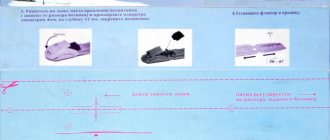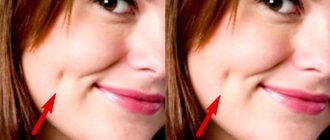Types of ski bindings
Fastenings are divided according to the features of their structure:
- automatic;
- mechanical.
The advantages of automatic models include:
- are fastened automatically, no need to bend over each row;
- low price of goods.
There are disadvantages:
- If pieces of ice or snow get under the shoe bracket, the automation does not work. It is necessary to completely clear all components of the structure;
- If the cleaning is not done properly, the fasteners may cause automatic release. This leads to disastrous results;
- At low temperatures, boots stick to the fastenings, as a result of which automatic release does not work. In this case, the boots are removed along with all the equipment and placed in a warm place to thaw.
The advantages of mechanical fastenings include:
- simple and reliable fastening;
- independent detachment is excluded even in unfavorable situations.
The only downside is the high price. But if quality and reliability are a priority, then it’s worth paying more.
The best automatic ski bindings for children and youth
The principle of operation of such bindings is similar to the adult versions, only the length of the platform is shorter, which allows them to be used on skis measuring 100-160 cm. This is the best option for starting skiing at the age of 7-10 years.
Salomon Prolink Access JR
Rating: 4.9
The Salomon ski platform is made on a single base with ergonomic cutouts under the foot that follow its shape. This provides an attractive appearance, minimal air resistance and reduced weight. Light locking of the toe is carried out automatically by simply pressing the shoe. The prefix in the name JR means that the device is suitable for juniors and will be comfortable on a teenage leg. The thin design of the base minimizes lift, improving tactile sensations and contact with the road. The guide systems are not interrupted, so the connection between the binding and the boot is present along the entire length.
The ski platform is rated as the best for its Prolink technology. It implies the presence of high guides in the heel area, ensuring maximum transfer of repulsion energy from the foot to the ski. Reviews from athletes show that they can develop high speeds and have an exceptional feeling of snow.
Advantages
- easy to use;
- stability of the ligament with the boot;
- secure fixation;
- easy to unfasten.
Flaws
- mounting interface without platform;
- Not suitable for users with foot size above 42.
Larsen Auto NNN
Rating: 4.8
The sports brand Larsen produces a mount with an NNN clamp type in black. A large inscription on the case immediately indicates the automatic type of system. In the manufacturer's catalog, this version is offered in size XS for skis with a length of 100-120 cm, as well as S for teenagers with a foot size of up to 40 and a ski length of 130-160 cm. The device is mounted using self-tapping screws. The platform consists of a combination of metal and plastic, and therefore combines strength and lightness. Judging by the reviews, customers like the product due to its simple operation and affordable price.
Experts highlight this mount because of the huge release button. It is so big that it is simply impossible to miss it. The automation is convenient for quickly releasing the leg, which can be especially useful in the event of a fall, when the user’s glasses are twisted, the glasses are fogged up and the “tabs” of the latches need to be felt.
Advantages
- light weight 200 g;
- suitable for skis with a length from 100 to 160 cm;
- There are several size options;
- a combination of metal and plastic.
Flaws
- only for shoes up to size 40;
- You'll have to make holes in your skis.
Selection of ski bindings
It is better to choose ski bindings from well-known and trusted manufacturers. Salomon, Rottefella, Fischer, Rossignol, Atomic are those companies that have become brands due to the quality and reliability of their products. The models cost more, of course, but the result is worth it. High quality materials are used for production. Before sale, they undergo thorough quality testing. Analogs from Russian and Chinese manufacturers are inferior in all these indicators, but their price is significantly lower.
Nordic Integrated System Ski Bindings
This ski binding system (abbreviated as NIS) was developed in 2005 and was immediately used by such well-known brands as Madshus, Rossignol and Alpina. This is an upgraded version of the NNN system, which has a board that is attached to the surface of the skis at the factory. This ensures easy installation of the mount and the ability to move it in the longitudinal plane. NIS bindings are compatible with boots using the NNN system.
Among the advantages of Nordic Integrated System fastenings, experts highlight:
- ease of installation;
- ability to move the mount;
- Compatible with the NNN standard.
Types of ski bindings
Ski bindings are divided into types according to their characteristics. Sports equipment is selected individually. The main types are alpine and cross-country skiing.
Alpine ski bindings
Fastener options for mining equipment are divided into two parts: front head, rear heel. Both of them are equipped with a scale. Thanks to them, the process of adjusting the forces is easier to complete.
The bindings have brakes, which are called ski stops. They are designed to brake the runners after they are detached. Most options have a platform equipped with a “rails” type. All parts of the fastenings move along them, which allows them to be adjusted to fit shoes of any size.
The principle of operation of the front part is to press the toe of the boot against the ski. In case of excessive load, the system automatically activates, unfastening the shoes. This helps reduce the number of injuries. The back secures the heel of the shoe and works in the same way.
Cross-country ski bindings
For cross-country skiing, the following types of ski boot fastenings are used: SNS and NNN.
For them, there are protrusions on the rails. Used primarily for skating as the front bracket is slightly offset towards the rear. With this option, the skis are easier to control.
The fasteners on the gutter have multi-colored rubber stops. The color of flexors for ski bindings helps to distinguish the degree of their rigidity and choose the option for a specific skiing technique. The meanings of the colors have the following interpretation:
- white for hard riding;
- green means the ski bindings are semi-rigid;
- black for standard style;
- Reds are very soft skating.
In SNS system models, the bracket with an elastic band is attached directly to the toe. Here we also sort the rubber stops by color. They are marked with rigidity, which divides them into:
- classic type with indicators of 85 and yellow color;
- red models with a hardness of 115 are suitable for skating equipment;
- universal types are designated by the number 95 and have a pink-lilac tint.
Important! Both systems are great for any boot size. The only exception is children's and junior shoes.
Basics of choosing running models
It is important to understand that you do not have to buy bindings and skis from the same brand. You can independently search for a suitable option. The main thing is that the elements are compatible.
Today three varieties are used:
75 mm
A classic design that has a bow made of durable material, as well as several small pins. They are located only in the place where the toe of the shoe is located.
The function of the arch is to tightly fit the sole so that it does not slip out while riding. A distinctive feature of the 75 mm models is their versatility. Because it is suitable for any size grid, even for small shoes. At the same time, the product has an affordable price, which starts from 190 rubles. But there are also disadvantages - poor fixation of the foot. Also, due to the fact that there is not enough rigidity, a person will not be able to skate in a skating style.
NNN
A relatively modern type of fastening, which appeared in 2005. The peculiarity of this option is that there is an elastic band in the front part, which returns the boot to its original position after a strong push. The toe rests tightly against this element, increasing safety.
When choosing NNN, it is important to focus on your own riding style. Three popular versions are sold, which differ in degree of hardness: soft, semi-hard, hard.
Like the previous option, the NNN mount is considered universal and is suitable for both adults and children. With the back brace moved back, the user will be able to try out the skate style. Most modern and professional skiers use only this option.
There are several advantages of NNN:
- Low cost. Of course, there are expensive models, but the average price is the same, plus or minus.
- Versatility. The product is suitable for both adults and children.
- Two types of equipment. There are manual and automatic models, which one to choose from, everyone determines independently.
- Variety of choice. Since this is the most popular option, almost every manufacturer produces an NNN clamp.
- Reliability. Thanks to the comfortable elastic band, the foot will never slip off.
However, automatic models have significant disadvantages:
- In severe frosts, there is a possibility that the structure will freeze;
- The mount stops working after getting in contact with dirt, snow or liquid.
SNS
The main difference between the fastening and the previous ones is that the boot is fixed on a wide guide. There are stops at the front made of durable rubber; thanks to their action, the boot can easily return back, even if there is a strong push. There are several types of hardness that can be easily changed depending on situations.
There are often two SNS systems in stores; it is important to pay attention to this, as they have some differences:
- Pilot. This type of model is used for constant skating style riding. The device is suitable for both inexperienced users and used by professionals. The advantage of this option is good control over the ski, which makes it possible to ride quickly but safely.
- Profil. The product differs from the previous one in its versatility. The mount is perfect for both skating enthusiasts and those who ride in a combined style. The advantages of Profil include: a high degree of ski control, low weight, excellent geometry, reliability, safety. Even some Olympic athletes prefer to use this option. The design contains an additional plate, thanks to which the repulsion phase increases, which directly affects the rolling distance.
Although such equipment is expensive, it will never let you down and will also increase security and control. At the same time, the strength indicators remain high, and the product will work properly regardless of the current weather. The main disadvantage of SNS is the difficult selection of boots and the impossibility of use on ordinary roads or tracks, only on those that are processed by snowcats.
Like skis, the binding must be selected based on the method and style of riding. Also, we must not forget about age, level of training, and sometimes shoe size. If a person does not plan to run a marathon of several tens of kilometers every winter, then the most common models - NNN or 75 mm - will do. If you plan to improve the skill, an SNS or NNN mechanical mount would be a suitable solution.
Skating technique on skis
The difference between skating and other techniques is the active participation of the legs. Increased pushing away from the ski track, adhering to a specific angle relative to the direction of the ski track. Visually reminiscent of ice skating. This is where the name of the technique comes from.
You can learn how to skate by following the following instructions:
- The starting position is taken: the rear ends are brought together, and the toes are spread at an angle not exceeding 60°.
- The technique is based on powerful kicks performed alternately. After the push, movement occurs by inertia. At this time, the muscles rest.
- Strengthen the push by putting the stick in front of the skier, but not too far. Next they push off with their foot, but not with their toe, but with the entire surface of the skis.
- Having completed the push, the fingers rise and press against the elbows.
The more often push-offs are performed, the higher the speed of the driver.
Tips for choosing ski bindings
Now you know what kinds of ski mounts there are. Experienced skiers usually prefer manual systems, while beginners and amateurs can opt for automatic models, as they are easier to operate. Considering the low speeds and elevation changes, as well as skiing mainly on flat trails, accidental opening or freezing of the binding is not as dangerous as during downhill skiing for professional athletes.
Screws indicating load scales must correspond to the tables supplied with the fastening system. If you have any difficulties choosing, contact professionals or consultants in the store, who will always tell you what kind of ski mounts there are.
How to properly install ski bindings
Installation of fasteners on skids has its own sequence. First of all, all holes are treated with glue. The composition is special, sold complete with fasteners. After a screw is inserted into the hole, microcracks form. The glue allows you to eliminate the defect and provide additional waterproofing.
If this process is not completed, liquid will penetrate into the cavity of the inventory. This leads to rotting and gradual destruction of the runners.
Glue is not always included. Then you can purchase it separately. The best option would be the compositions of the branded ]Salomon[/anchor] and Rottefella.
Important! It is not advisable to use glue containing epoxy resins. Their impact is detrimental to the material from which the equipment is made.
The device must be secured securely. There should be no vacillation of the system. The screw is tightened tightly, but not pinched. After completing the installation, the equipment is left to dry for 12 hours.
Which ski bindings are better: mechanical or automatic?
All manufacturers have automatic and mechanical fasteners in their line. Automatic ones latch themselves and unfasten manually. Mechanical - fastened and unfastened manually.
- Automatic bindings are less reliable and are designed for skiing; they are much cheaper than mechanical ones. They can come unfastened at the most inopportune moment if snow has clogged the mechanism before riding.
- Mechanical fastenings are reliable and durable, designed for training and competitions, and can withstand heavy loads. They cost more, but they work like a clock - they don’t come off at the wrong time, and the mechanism doesn’t freeze.
How to choose skis for skating
When choosing equipment for skating, they rely on the basic requirements:
- the length is the user’s height plus 10-15 cm;
- The weight of the skier and the level of skiing technique are taken into account. If the skill is high, then the length is selected 15 cm more than the height. Otherwise, the minimum indicators are selected;
- The degree of rigidity of the runners plays a special role. In the case when the weight is more than normal in relation to a person’s height, then the deficiency must be compensated by increasing rigidity.
Salomon Nordic System ski bindings
This fastening system, called SNS for short, was invented by the French company Salomon. The boot is fixed on a wide longitudinal guide, in the front part of which there are rubber stops. By changing their rigidity, you can change the rigidity of ski control. Therefore, those who are looking for good fastenings for skating should take a closer look at this option.
SNS mounts can be divided into two subcategories:
- SNS Pilot is a good option for skating riding techniques;
- SNS Profil is a universal option, suitable for skating, classic or combined styles.
These types of ski boot fastenings are considered very reliable. Such well-known companies as Atomic, Salomon, Adidas and Spine work with SNS fastenings. Their advantages include:
- good strength and reliability;
- production of children's and teenagers' fastenings.
How to choose alpine skis
The choice of alpine skis is carried out according to the following parameters:
- Radius. It is determined by how sharp the turns on the ski track are planned. The smaller the radius value, the steeper you can turn. With a radius of 17 m, turns will be smooth.
- Width. An indicator characterizing the level of cross-country ability. A width of 73-85 mm is suitable for riding on prepared slopes. Skids with a waist width of 90 mm and above work well in deep snow.
- Alpine ski shape. The structure has a waist, toe and heel. The ratio of parameters gives different characteristics. The wide toe box in relation to the waist provides good rotation. The narrower the heel, compared to the waist, the better the runners glide along the ski track.
- Rigidity. In alpine skiing, stiffness is not standardized. You can only determine it by feeling it with your own hands. Focus on the following parameter. For professionals, the equipment has greater rigidity.
How to choose cross-country skis
The cross-country version of skis is chosen in accordance with the goal. When entertaining, it is enough to pay attention to the following factors:
- Geometry of runners. Inventory with a width of 44 to 48 mm is considered narrow, and equipment with a width of 48 mm or more is classified as wide. The wider the skis, the more stable they are.
- Methods of repulsion. Products come with or without notches. In the first case, the skis always hold, but the speed is much lower. Lubricated ones have a higher speed, but you need to tinker a lot during the process of lubricating them. You also need to understand the correct selection of lubricant.
- The weight of the equipment is determined by its design. This takes into account the geometry, structure of the core and the materials from which they are made.
- The length is adjusted according to height. If determined correctly, 25 cm is added to the skier’s height. The length of the poles corresponds to the distance from the ski track to the armpits.
Best Adult Automatic Ski Bindings
This type of fastening involves securing the skier's shoes without the use of hands. You simply insert the sole into the intended place and the system clicks into place. This is convenient for quickly getting on your skis without bending your body. Some options even allow you to release the clamps by pressing a stick. But at high speed there is a risk of spontaneous unfastening, so these models are suitable for beginners and relaxed skiing.
Fischer Step-in
Rating: 4.9
Topping the list of the best automatic ski racks is a model from the global brand Fischer. The system consists of two parts and is fixed to the skis using four self-tapping screws. Thanks to its separate design, you can adjust it to your foot size, even if it is small or very large. This allows both children and adults to use the mechanism. The device has two longitudinal projections with three transverse cuts to securely hold the boot. The small flexor at the front easily snaps the 40 Sha toe in place. The rubber sill around it protects the automatic system from damage when colliding with branches or other obstacles. Frost-resistant plastic tolerates use well in winter conditions. The binding is suitable for men's and women's feet, as well as for skis of all types of width.
This model is the optimal choice for a beginner in terms of endurance and wear resistance. It is very high quality and will last up to 10 years if you ski once a week all winter.
Advantages
- the relatively low weight of 270 g does not weigh down the skis;
- frost-resistant plastic;
- Available in white and gray colors;
- suitable for beginners.
Flaws
- you will have to make four holes in each ski;
- Only for relaxing riding.
Salomon SNS Profil Auto Universal
Rating: 4.8
Another global brand, Salomon, offers automatic fastening of the SNS type in the Profil Auto Universal model. This is a clamp for an adult user and is not adjustable for leg length. Although there is no restrictor at the back, those with sizes 46 and above should only try them in person in the store, bringing their own boots, otherwise the device may not fit. The body of the device is made of frost-resistant plastic, which is difficult to scratch with ice or branches. The flexor securely locks the toe, leaving the heel free to run or squat during maneuvers. The system is installed with screws, so you will need a drill for installation. The weight of 260 g does not overload the skis and contributes to the athlete’s high speed of movement.
We highlighted the fastening for the increased rigidity of the flexor - 100 Sha. This allows you to securely fix the foot, which is optimal not only for classic or skating running, but also for overcoming small jumps along the way.
Advantages
- light weight 260 g;
- suitable for men and women;
- long service life during classic running;
- convenient unfastening.
Flaws
- installation with screws;
- May not be suitable for foot sizes 46 and above.
How to choose skis for a child
Skis are selected for a child depending on his age. For a three-year-old child, you need equipment that is short and of maximum width. When a little skier just starts skiing, we are not talking about speed. At this stage, they learn to maintain balance, make turns, and master sliding.
Important! For the first skating, purchase equipment with a width of 8 cm and a maximum length of 40 cm.
In the case when the child is already confident on skis, they switch to a more sporty model. It should be slightly narrower than 5 cm, and the length should be commensurate with height. It is calculated by the formula: height plus 15 cm. In adolescence, runners are purchased depending on weight and height. The choice and skating technique that the child prefers significantly influences.
Criterias of choice
If you can’t figure out how to choose the best model, seek advice from experts. But there are general rules: be sure to pay attention to the user’s weight and height. Values are often applied to products on the outside. Before making a final decision, the product should be thoroughly examined. If even a slight deformation is detected, you should refuse the purchase.
Even if a product tops the rating of quality products, this is not a reason to neglect checking. There are defects even in the premium segment. Carefully review the sliding surface. It should be perfectly smooth and straight. No dents or bumps (groove does not count). What else should you pay attention to? Same width (except for side cut).
If there is a flat end part, the quality of the geometry is checked in this way: the ski is placed on a flat horizontal surface sideways. There should be no gap with the floor.
Material
Popular models are made of plastic and wood. Which product is best to buy depends on personal preferences. Plastic structures have ideal glide, are lightweight, retain an attractive appearance for a long time, have a long service life, are not afraid of positive temperatures, and are not afraid of humidity. Wooden ones are more suitable for amateurs or beginners who are taking their first steps in skating.
Size
There is a general rule for choosing such designs depending on the type of product and the height of the person:
- classic – 30 centimeters are added to height;
- skating - just add 10 centimeters;
- tourist - plus 30 centimeters in height.
Hardness type
What are the different types of stiffness of running structures? There are the following types:
- soft;
- medium hard;
- hard.
How to choose the right option? It is enough to place the runners on the floor and stand on them with your feet. The ideal model is when the “load area” does not touch the floor by 1 - 2 mm. If you transfer your weight to one leg, lifting the other, the product should touch the floor completely.
You can squeeze the structure with both hands. If the contact is not complete, then the skis are too hard.
Making a choice between mechanical and automatic devices
The type of fastener has been selected. The time has come to decide on the principle of action. For pros, mechanics are most suitable. At high speeds and significant repulsion force, the runner may come unfastened, which will inevitably lead to injury to the athlete. If there are mechanical fastenings, this option is completely excluded. Therefore, experienced skiers choose mechanics for competitions and training. The only inconvenience: you have to constantly bend down to unfasten or fasten the structures.
For hunting products, recreational use and amateur riding, you can choose an automatic mount. It is convenient to use. Fastening occurs simply: the boot toe rests on the recess in the lock. It is much easier to unfasten: you press a button located on the base of the boot. If you are too lazy to bend over, a stick will come to the rescue. Unauthorized unfastening can be avoided by purchasing high-quality models from the world's leading manufacturers.
Mechanical models are more expensive than their automatic counterparts.
Ski bindings NNN and SNS: which ones to choose
Two types of ski bindings have become very widespread: SNS and NNN. Systems require selection of the type of footwear. Although compatibility is possible in each direction. A special feature is the presence of guides for fixing the mount.
Cross-country skiing devices come in different types. You can find both automatic and mechanical fastenings. Experienced skiers prefer SNS with a mechanical locking device. For beginners, NNN options with automatic fastening are suitable. They are a little easier to handle and cost less. In addition, they will fit any shoe size.
The Best Children's Mechanical Ski Bindings
Children's versions of the mechanical type are similar to adults, only designed for smaller foot sizes. If a child has been skiing since the age of 6, then it is better for him to choose the next binding from those presented in this category.
Fischer Tour Step-in Jr Ifp
Rating: 4.9
The Fischer brand, which produces many bindings for adults, also took care of young users by developing the Tour Step-in Ifp model with the Jr. prefix. The only difference is that the heel is not adjustable in length, but otherwise all the functionality that promotes fast classic running is retained. The NNN locking system has almost solid two ribs for full-length grip on the outsole. The powerful pressure plate holds the toe of the boot securely, but is easy for a child to open.
Our experts praised the mount for its Flowflex fixation technology. To do this, an additional base is installed on the skis, and the panel with a lock simply slides into the grooves onto it. Installation of the mount itself takes 1 second. In addition to quick installation using the IFP system, this model is distinguished by the fact that it holds the ski at just one point. This design does not strengthen the wooden material and does not affect the rigidity of the equipment. The skis remain flexible and spring-loaded for dynamic riding.
Advantages
- easy to quilt boots;
- adjustment according to the individual needs of the skier;
- the fastening does not prevent the ski from bending;
- The semi-automatic type is more reliable than automatic and more convenient than pure mechanics.
Flaws
- length is not adjustable.











